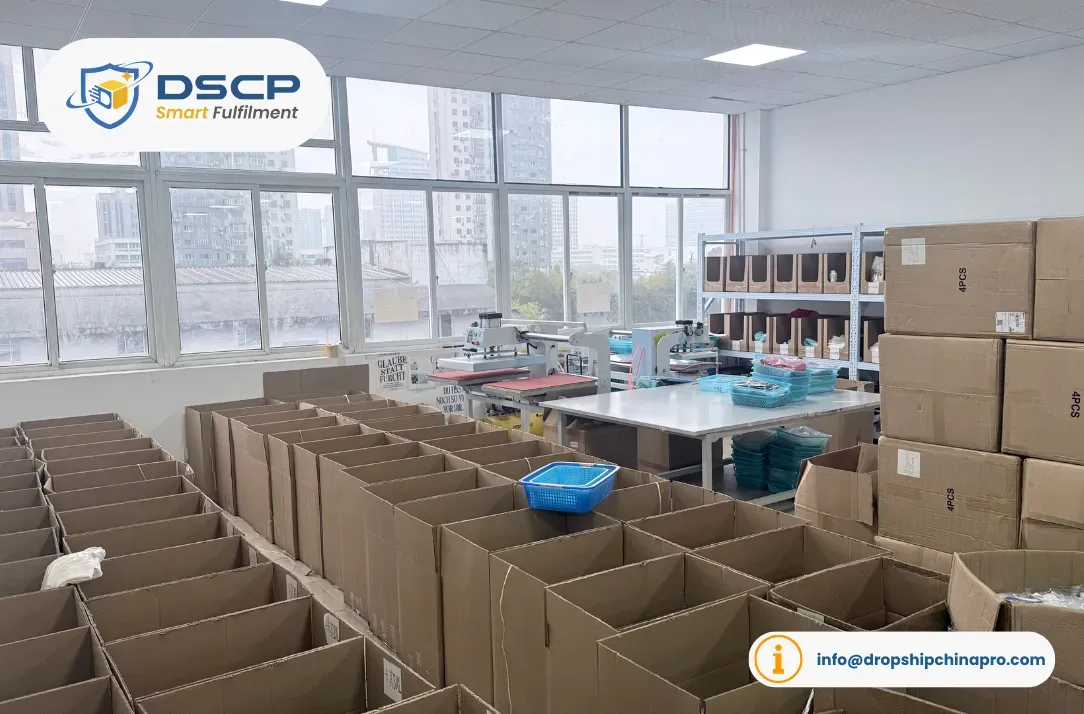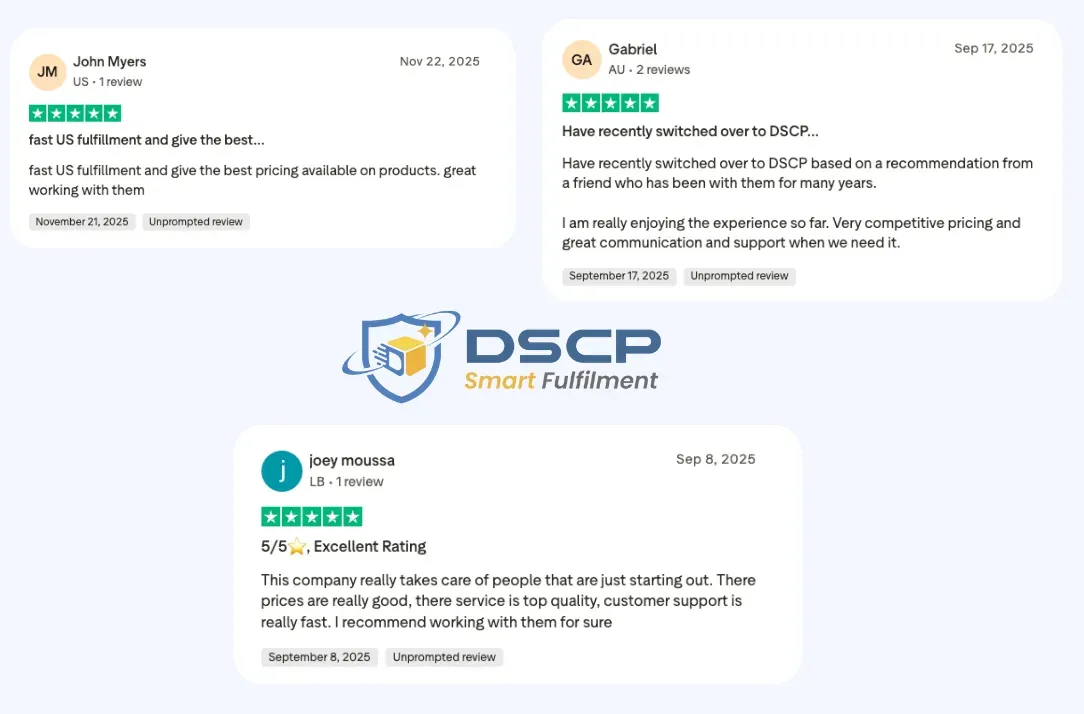The final weeks of Q4 2025 are behind us, and while most e-commerce sellers are still recovering from the holiday rush, the most successful dropshippers are already planning for Q4 2026. This isn’t premature planning; it’s strategic thinking that separates thriving businesses from those scrambling when October arrives.
Peak season preparation determines whether your business will capitalize on the year’s most lucrative quarter or struggle with stockouts, shipping delays, and disappointed customers. The difference between success and failure often comes down to decisions made nine to twelve months in advance.

Key Takeaways: Q4 2026 Peak Season Preparation
- Start planning in Q1 2026: The most successful dropshippers begin peak season preparation 9-12 months in advance, allowing time for supplier vetting, inventory positioning, and marketing campaign development.
- Holiday sales drive annual revenue: Q4 accounts for a disproportionate share of annual e-commerce revenue, with some businesses generating 50-70% of yearly income during these three months.
- Hybrid fulfillment delivers a competitive advantage: Combining international sourcing with domestic warehouse distribution enables fast delivery speeds while maintaining cost-effective procurement.
- Early inventory planning prevents stockouts: Products requiring ocean freight from international suppliers need 4-8 weeks transit time, making early ordering essential for peak season readiness.
- Marketing momentum builds over time: Campaigns launched in August and September create audience engagement that intensifies throughout Q4, outperforming hastily assembled November efforts.
- System testing prevents costly failures: Comprehensive testing of payment processing, inventory management, and shipping integrations during low-stakes periods prevents embarrassing technical failures during peak demand.
- Strategic partnerships provide scalability: Professional fulfillment services offer quality control, flexible capacity, and domestic shipping capabilities that individual businesses struggle to develop independently.
Understanding the Q4 Peak Season Phenomenon
The fourth quarter transforms e-commerce from steady business into a high-stakes sprint. This three-month period from October through December accounts for a disproportionate share of annual revenue for most online retailers. According to the National Retail Federation, holiday retail sales in 2024 grew by 3.5% compared to the previous year, representing billions in consumer spending (National Retail Federation, 2024).
Peak season preparation isn’t simply about having enough inventory. It encompasses supplier coordination, fulfillment capacity, marketing campaigns, customer service readiness, and systems that can handle volume surges without breaking down. The complexity increases for dropshippers who rely on external partners for inventory management and order fulfillment.
Three factors drive Q4’s intensity:
- Major shopping events: Black Friday and Cyber Monday create concentrated demand spikes that can overwhelm unprepared operations.
- Gift-giving holidays: Sustained elevated order volumes from Thanksgiving through New Year’s require consistent fulfillment capacity.
- Shipping deadlines: Time pressure for guaranteed holiday delivery amplifies every operational inefficiency.
The stakes are particularly high for small to mid-size e-commerce sellers. A successful Q4 can fund growth initiatives for the entire following year. Conversely, operational failures during peak season damage customer relationships, generate negative reviews, and create financial losses that take months to recover from.

Why Early Peak Season Preparation Matters
The most successful dropshippers begin their Q4 peak season planning by the first quarter of the year. This timeline might seem excessive, but it reflects the complex coordination required across multiple business areas.
Supplier relationships require months to establish and test. Identifying reliable partners, negotiating favorable terms, and validating product quality through sample orders takes time. Rushing this process in September leaves no room for course correction if suppliers prove unreliable or product quality falls short of expectations.
Inventory planning benefits from early decision-making. Products shipped from international suppliers to domestic warehouses can require 4 to 8 weeks for ocean freight, plus additional time for customs clearance and warehouse receiving. Beginning this process in Q1 or Q2 ensures inventory arrives well before peak demand begins.
Fulfillment Model Comparison
| Fulfillment Type | Average Delivery Time |
|---|---|
| Direct from China | 14-28 days (longer in peak season) |
| Hybrid Fulfillment | 2-4 days from US warehouses |
| Amazon FBA | 1-2 days (Prime eligible) |
| Self-Fulfillment | Varies by location and capacity |
Marketing campaigns achieve better results when developed with adequate lead time. Content creation, audience building, and campaign optimization all improve with extended timeframes. Email lists built over months convert better than those assembled hastily. Social media audiences cultivated throughout the year respond more enthusiastically to promotional campaigns.
System testing under realistic conditions prevents embarrassing failures during critical periods. Payment processing, inventory management, shipping integrations, and customer communication systems all deserve thorough testing before high-volume periods. Early preparation provides time to identify and fix problems while stakes remain low.
Your 2026 Peak Season Preparation Timeline
Q1 2026: Foundation Building (January-March)
Q4 2026 Preparation Timeline
| Quarter | Primary Focus |
|---|---|
| Q1 2026 (Jan-Mar) | Supplier evaluation and financial planning |
| Q2 2026 (Apr-Jun) | Inventory ordering and system testing |
| Q3 2026 (Jul-Sep) | Marketing campaigns and final preparations |
| Q4 2026 (Oct-Dec) | Execution and daily monitoring |
The first quarter focuses on strategic decisions that shape your entire peak season approach. Key priorities for this period include:
- Comprehensive supplier evaluation: Research potential partners, request samples, and evaluate quality, communication, and pricing transparency. If you’re considering new products or questioning current supplier reliability, Q1 is the time for change.
- Performance data analysis: Review Q4 2025 results to identify top-selling products, inventory shortages, and effective marketing channels. These insights inform product selection, inventory levels, and marketing budget allocation.
- Financial projections: Calculate sustainable inventory investments, marketing budgets, and required sales volumes for profitability. These projections guide every subsequent decision.
- Fulfillment partnership exploration: For businesses considering hybrid fulfillment models that combine international sourcing with domestic warehouse distribution, Q1 is the optimal time to evaluate providers, understand pricing structures, and set up integrations.
Starting early ensures systems are operational and tested well before peak demand arrives.

Q2 2026: Infrastructure and Systems (April-June)
The second quarter shifts focus to building the infrastructure that will support peak season operations. Critical Q2 tasks include:
- Finalize inventory planning: Based on Q1 analysis, select products and calculate required quantities. Consider that Q4 demand typically runs 30 to 40% higher than average months for most e-commerce businesses (Statista, 2024).
- Place bulk orders: Initiate shipments with suppliers, particularly for products requiring ocean freight to domestic warehouses. A shipment started in April or May arrives in June or July, providing ample buffer before peak season begins.
- Audit technology infrastructure: Review your e-commerce platform, payment processing, inventory management, and shipping integrations. Conduct load testing to identify potential bottlenecks before high-volume periods.
- Prepare customer service capacity: If you plan to expand support team capacity for Q4, begin recruiting and training during this period. Document common inquiries and create templated responses to save time when order volumes surge.
Technology infrastructure deserves particular attention during Q2. Small businesses processing 50 orders daily during regular periods might face 200 or 300 orders daily during peak weeks. Systems need the capacity to handle these surges smoothly.
Q3 2026: Marketing and Final Preparations (July-September)
The third quarter is when peak season preparation becomes intense and tangible. Marketing campaigns move from planning to execution. Develop content calendars for social media, blog posts, and email campaigns. Create promotional graphics, product photography, and video content. The businesses that dominate Q4 sales typically begin marketing efforts in September or even August, building momentum that peaks during November and December.
Marketing Channel Strategy
| Marketing Channel | Best Start Time |
|---|---|
| Email List Building | July-August (Q3) |
| Social Media Content | August-September |
| Influencer Partnerships | July-August |
| Paid Advertising | September-October |
| Content Marketing | Year-round for SEO benefits |
Email list growth deserves focused attention during Q3. Offer valuable content, develop lead magnets, and create landing pages that convert visitors into subscribers. An email list built over several months converts far better than one assembled hastily in October. Segment your list based on customer preferences and purchase history to enable personalized campaigns.
Social media presence should intensify during this period. Consistent posting builds audience engagement that makes promotional campaigns more effective. Consider partnerships with micro-influencers whose audiences align with your target customers. These relationships require time to develop and often deliver better return on investment than hastily arranged promotional posts.
Inventory levels require monitoring throughout Q3. Products selling faster than projected need early reordering. Items moving slowly might need promotional efforts to prevent excess inventory. The goal is reaching October with appropriate stock levels: enough to meet demand without excess that ties up capital or requires deep discounts to liquidate.
Final system checks occur in September. Test order processing workflows, verify shipping integrations, and confirm inventory synchronization across sales channels. If you sell on multiple platforms, ensure inventory counts update correctly to prevent overselling. Send test orders through your fulfillment process to verify every step executes correctly.

Q4 2026: Execution and Adaptation (October-December)
When Q4 arrives, preparation should be complete. This quarter focuses on execution, monitoring, and rapid response to unexpected challenges. Continue marketing campaigns as planned, adjusting based on performance data. Promotional timing matters significantly. Early promotions in October capture budget-conscious shoppers, while last-minute campaigns in December appeal to procrastinators seeking expedited shipping.
Monitor inventory levels daily during peak season. Popular products can sell out quickly, and reordering takes time even with domestic suppliers. Automated low-stock alerts prevent stockouts that cost sales and disappoint customers. If certain products exceed expectations, prioritize reordering these items over slower-moving inventory.
Customer communication becomes crucial during Q4. Shipping deadlines for guaranteed Christmas delivery should be clearly published and frequently reminded. Order confirmations, shipping notifications, and delivery updates all reduce customer anxiety and support inquiries. Proactive communication about potential delays demonstrates transparency that builds trust even when circumstances prevent ideal service.
Customer service capacity needs monitoring throughout the period. If inquiry volumes exceed your team’s capacity, response times suffer and customer satisfaction declines. Consider whether seasonal support staff or chatbot technology could help manage routine inquiries, freeing human attention for complex issues requiring judgment.
Common Peak Season Preparation Mistakes
Peak Season Mistakes vs. Solutions
| Common Mistake | Smart Solution |
|---|---|
| Underestimating Inventory | Plan for 30-40% volume increase |
| Direct China Shipping Only | Use hybrid fulfillment model |
| Late Marketing Start | Begin campaigns in August-September |
| Poor Customer Updates | Automate tracking notifications |
| No System Testing | Test all systems in Q2-Q3 |
Even experienced e-commerce sellers make mistakes that undermine Q4 performance. Understanding these pitfalls helps you avoid them:
- Underestimating inventory requirements: This ranks among the most costly mistakes. The pain of excess inventory pales compared to lost revenue and customer frustration from stockouts. If uncertain about quantities, err toward more rather than less. Excess inventory can be sold through post-holiday promotions, but stockouts can never be recovered.
- Relying entirely on direct-from-China shipping: International shipping becomes congested and unpredictable during autumn and early winter. Packages that normally take two to three weeks might require five to six weeks during peak periods. Hybrid fulfillment models that position popular products in domestic warehouses provide delivery speeds that meet customer expectations.
- Neglecting customer communication: This generates unnecessary support inquiries and anxiety. Customers checking order status or asking about delivery timing represent failures in proactive communication. Automated tracking updates and realistic delivery timeframe commitments significantly reduce these inquiries while improving satisfaction.
- Starting marketing efforts too late: By the time many businesses launch holiday campaigns in November, customers have already discovered competitors who began marketing earlier. Building momentum throughout the autumn creates advantages that intensify as the season progresses.
- Failing to test systems under realistic conditions: Payment processing errors, inventory synchronization problems, or shipping integration failures all become far more costly when occurring during peak demand periods. Comprehensive testing during low-stakes periods prevents these failures when they matter most.
The Role of Strategic Fulfillment Partnerships
Peak season amplifies every operational challenge, making reliable fulfillment partnerships valuable investments rather than simple expenses. Professional fulfillment services provide capabilities that individual businesses struggle to develop independently:
- Quality control systems: Inspect incoming inventory and verify outgoing orders, catching product issues before they reach customers. This prevents negative reviews and returns that damage businesses during and after peak season.
- Scalable capacity: Handle volume surges without service degradation. Professional fulfillment operations absorb fluctuations through flexible labor and systems designed for variable volumes, preventing bottlenecks that delay shipments and frustrate customers.
- Domestic fulfillment capabilities: For businesses serving US markets, two-day ground shipping from strategically positioned warehouses meets customer expectations that direct international shipping cannot match. This delivery speed advantage becomes particularly valuable during December when shipping deadlines create urgency.
- Technology integrations: Automate order routing, inventory synchronization, and tracking updates. These automations reduce manual workload precisely when your time is most valuable, allowing you to focus on marketing, customer service, and strategic decisions that actually build business value.
Strategic fulfillment partnerships transform logistics from a constant operational challenge into a competitive advantage that enables business growth.

Real Success: How Strategic Planning Made the Difference
Consider the experience of David Thompson, an emerging e-commerce seller who approached Q4 2025 with thorough preparation. Beginning in February, he analyzed previous year performance data, identifying best-selling products and inventory shortages that cost sales. He used these insights to select products and calculate inventory quantities for the coming peak season.
By April, David had finalized supplier agreements and initiated shipments to his fulfillment partner’s US warehouses. Products arrived in June, providing months of buffer before peak demand. Throughout Q2 and Q3, he developed marketing campaigns, built his email list, and created social media content that resonated with his target audience.
When October arrived, he was ready. Marketing campaigns launched on schedule, driving traffic to an optimized website backed by domestic inventory capable of two-day delivery. While competitors struggled with shipping delays and stockouts, David’s business consistently fulfilled orders within 48 hours.
The results spoke clearly. Q4 2025 generated 65% of his annual revenue, far exceeding projections. Customer satisfaction remained high throughout the period, evidenced by positive reviews and minimal support inquiries. Perhaps most importantly, the strong Q4 provided capital to fund expanded operations for 2026.
David reflected on the experience: “Starting our peak season preparation in February felt excessive at the time, but it made all the difference. While others were scrambling in November, we were executing a plan we’d refined over months. Our customers got fast shipping, we maintained our sanity, and the business thrived.”
David’s success wasn’t accidental. It resulted from implementing proven dropshipping strategies consistently throughout the year. For a comprehensive guide on the strategies that help businesses dominate in competitive markets, explore our complete dropshipping strategies guide for 2026.

FAQs for the Q4 2026 Peak Season Preparation
When should dropshippers start preparing for Q4 2026?
Serious dropshippers should begin Q4 2026 preparation by January or February 2026. This timeline allows adequate time for supplier evaluation, inventory planning, infrastructure development, and marketing campaign creation. While this might seem premature, the complexity of coordinating multiple business areas makes early planning essential for peak season success.
What inventory levels should I maintain for peak season?
Inventory levels depend on your specific products and sales history, but most businesses should plan for 30 to 40% higher volumes during peak season compared to average months. Analyze previous year data to identify your best-selling items, then calculate quantities based on projected demand plus safety stock. If uncertain, err toward higher quantities, as stockouts cost more than modest excess inventory.
How does hybrid fulfillment improve peak season performance?
Hybrid fulfillment combines international sourcing with domestic warehouse distribution, enabling cost-effective procurement while maintaining fast delivery speeds. Products ship in bulk from overseas suppliers to US warehouses, then fulfill orders domestically within two to four days. This model meets customer delivery expectations during peak season when speed becomes a primary purchase decision factor.
What marketing channels work best for Q4 campaigns?
Effective Q4 marketing typically combines multiple channels rather than relying on a single approach. Email marketing delivers excellent ROI for businesses with established lists. Social media, particularly Instagram and TikTok, effectively reaches younger audiences. Paid advertising through Google and Facebook provides scalable traffic, though costs increase during peak season. Content marketing built throughout the year creates organic traffic that costs less than paid channels.
How can small dropshippers compete during peak season?
Small dropshippers compete through specialization, superior service, and strategic planning. Focus on specific niches where you can develop expertise and build community. Provide exceptional customer service that larger competitors struggle to match. Begin planning months ahead to avoid the resource constraints that disadvantage smaller operations. Partner with fulfillment services that provide enterprise-level capabilities without requiring enterprise-level commitments.
What systems should I test before peak season?
Test all systems involved in order processing and fulfillment. This includes your e-commerce platform under high load, payment processing for various payment methods, inventory synchronization across sales channels, shipping integrations with carriers, automated email sequences for order confirmations and tracking, and customer service tools like chatbots or ticketing systems. Send test orders through your complete fulfillment process to verify every step executes correctly.

What Dropshippers Say About Strategic Fulfillment
Real experiences from e-commerce sellers highlight the value of reliable fulfillment partnerships during peak season and beyond.
Joey Moussa, an emerging dropshipper from Lebanon, shares: “This company really takes care of people who are just starting. There prices are really good, there service is top quality, customer support is really fast. I recommend working with them for sure.”
Gabriel from Australia switched to DSCP based on a trusted recommendation: “Have recently switched over to DSCP based on a recommendation from a friend who has been with them for many years. I am really enjoying the experience so far. Very competitive pricing and great communication and support when we need it.”
John Myers, a US-based seller, emphasizes the fulfillment advantage: “Fast US fulfillment and give the best pricing available on products. Great working with them.”
These testimonials reflect consistent themes: reliable service, responsive support, competitive pricing, and fast US fulfillment capabilities that enable businesses to meet customer expectations during peak season and throughout the year.
Your Partner in Peak Season Success
Peak season success requires more than simply having products to sell. It demands strategic planning, reliable infrastructure, and often partnerships with services that provide capabilities beyond what individual businesses can develop independently.
DSCP Smart Fulfillment has supported e-commerce businesses through peak seasons since 2016, helping over 1,500 active stores navigate Q4’s complexities. The service combines international sourcing capabilities with strategically positioned US warehouses in Los Angeles and New Jersey, enabling businesses to source cost-effectively while delivering domestically within two to four days.
With capacity exceeding 30,000 parcels daily and maintaining 99.2% on-time dispatch rates, the infrastructure scales to accommodate peak season surges without service degradation. The pay-as-you-go model provides flexibility, particularly valuable for growing businesses, requiring no long-term commitments or minimum volumes that exclude smaller operations.
For Shopify store owners, seamless integration is available through the DSCP Smart Fulfillment app on Shopify, which automates order routing, inventory synchronization, and tracking updates directly within your store dashboard.
Whether you’re preparing for your first peak season or seeking to improve on previous years’ performance, exploring strategic fulfillment partnerships can transform your Q4 results. Consider how hybrid fulfillment, quality control, and scalable capacity might strengthen your peak season performance.

Conclusion: Start Planning Today for Peak Season Success
Q4 2026 might seem distant, but the most successful dropshippers recognize that peak season success is built on decisions made months in advance. Strategic preparation beginning in early 2026 provides time for supplier relationships, inventory positioning, system optimization, and marketing campaigns that create competitive advantages when autumn arrives.
The difference between thriving and struggling during peak season often comes down to the planning timeline. Businesses scrambling to prepare in September inevitably encounter problems that could have been prevented with earlier action. Suppliers are less accommodating, shipping takes longer, and marketing campaigns lack the momentum that builds over extended periods.
Your peak season preparation timeline begins now. Evaluate your current supplier relationships, assess whether hybrid fulfillment could improve your delivery speeds, and start planning the marketing campaigns that will drive Q4 success. The businesses dominating Q4 2026 are those beginning preparation in Q1 2026.
Peak season preparation isn’t about working harder during Q4. It’s about working smarter during Q1, Q2, and Q3 so that Q4 becomes executing a refined plan rather than managing chaos. Start building your competitive advantages today.
References
- National Retail Federation. (2024). Holiday Retail Sales Report. Retrieved from nrf.com
- Statista. (2024). E-commerce Sales Growth and Seasonal Trends Analysis. Retrieved from statista.com

Hi, I’m Yavuz. I help e-commerce businesses grow through strategic content and SEO. Here, I share insights on fulfillment solutions, 3PL partnerships, and digital marketing strategies based on real data and industry trends.





